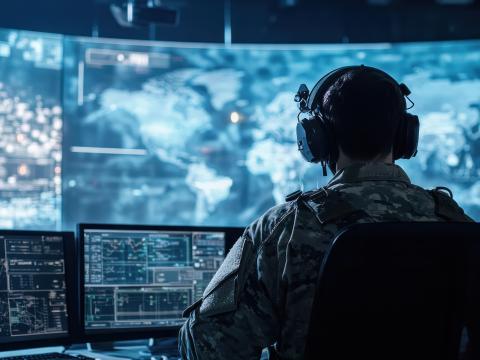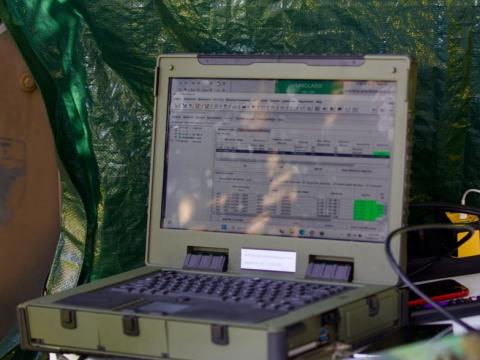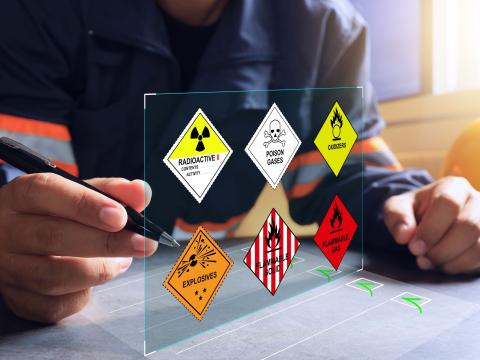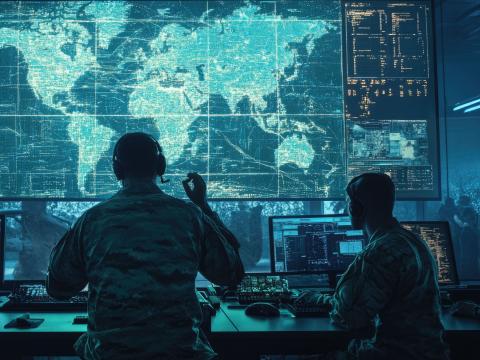Army Signifies Shift to Electromagnetic Warfare With Capability Development
U.S. Army officials are directing the attention of fellow soldiers and private sector individuals to the importance of winning the race in the electromagnetic spectrum (EMS) environment. To outpace adversaries, Program Executive Office Intelligence, Electronic Warfare & Sensors (PEO IEW&S) personnel announced that they are adding four new areas of focus, which they expect will help expedite the process of integrating game-changing technologies into the modern battlefield.
First, PEO IEW&S officials will focus on prototyping and fielding mature commercial-off-the-shelf and government-off-the-shelf systems that advance with technology. This marks a significant shift from the traditional way of building and developing systems from the ground up. This long-established method is taking too long, and soldiers need a more efficient process for obtaining groundbreaking, battlefield-ready technologies, according to Col. Scott Shaffer, USA, project manager, Electronic Warfare & Cyber, PEO IEW&S.
“We spent a lot of time doing ground-up development, just the ground roots, and we spent a lot of time and a lot of money, and sometimes, the systems didn’t actually meet everything we were asking for,” Shaffer said at TechNet Augusta 2025, held in Augusta, Georgia. “Like, old acquisition systems, where I want you to build everything 100% and then field. Now, we’re not at that point. We want to field quicker, maybe a little bit less capable of systems, but something that’s available now.”
“We are going to try to integrate existing solutions that are out there together to give you what you need,” Shaffer added.
Next, Army officials will provide accelerated learning opportunities and refine certain requirements through unit-level experimentation and demonstration early in the capabilities’ life cycle. This area of focus could be risky, but it is something that the Army must do, Shaffer stressed.
“We’re getting out there,” Shaffer said. “That’s half the battle [and] it’s already heading in the right direction. If what we’re building makes 50%, 60% of what you need, let us know, and then we just fix it as we get on the road. With the way the threat is moving and evolving over time, we have to be OK with that. It’s a little bit of a risk. But we’re going to continue to demonstrate and experiment.”
The final two areas that Army leaders will focus on are commonly allotted software frameworks, modular platform-agnostic and open architectures across the Army, joint forces and EW, and data-centric approaches that allow for horizontal integration opportunities and interoperability to bolster targeting and fires, according to Army officials.
To support this monumental shift, Army crews are working to build, develop and field capabilities that may help the United States win the race to EMS superiority. Some examples of these technologies are the Terrestrial Layer System (TLS) Manpack, Electronic Warfare Planning & Management Tool, Spectrum Situational Awareness System, Modular Electromagnetic Spectrum System, Counter Surveillance Reconnaissance and TLS Echelons Above Brigade.
This announcement comes soon after PEO IEW&S officials published an article stressing the need to develop and field revolutionary technologies in the EMS space that can help the U.S. win the race.
TechNet Augusta is organized by AFCEA International with help from the U.S. Army Cyber Center of Excellence. SIGNAL Media is the official media of AFCEA International.





Comments